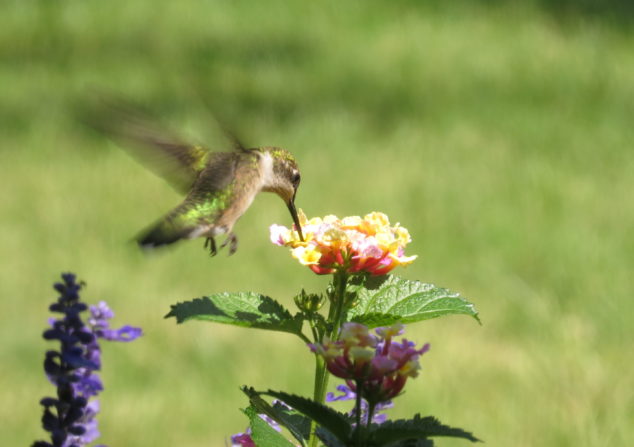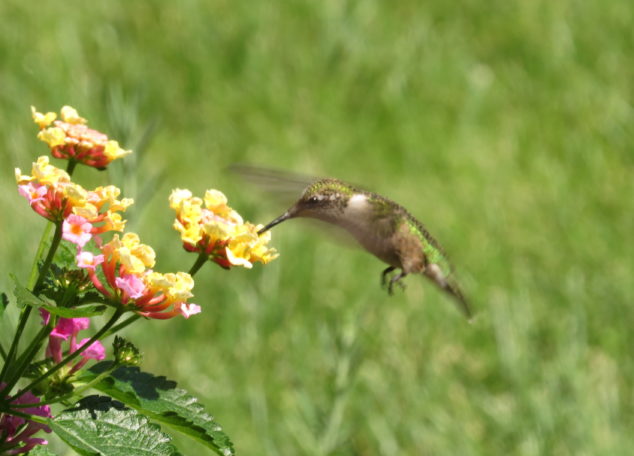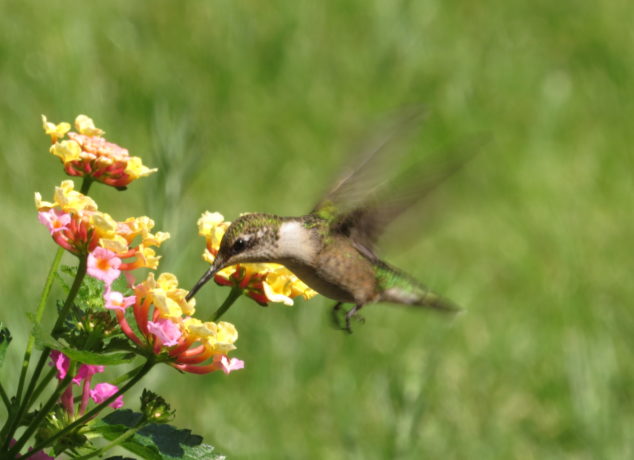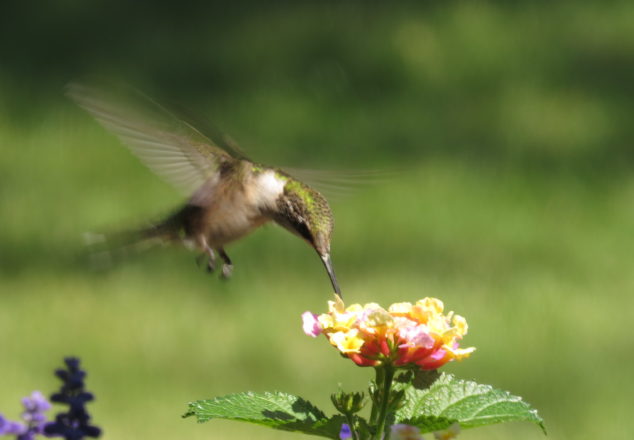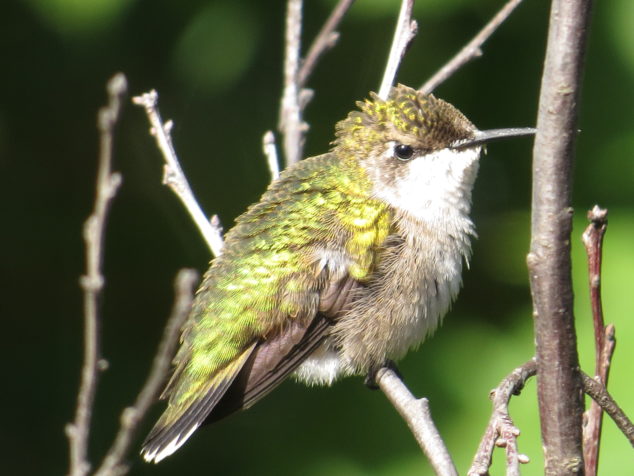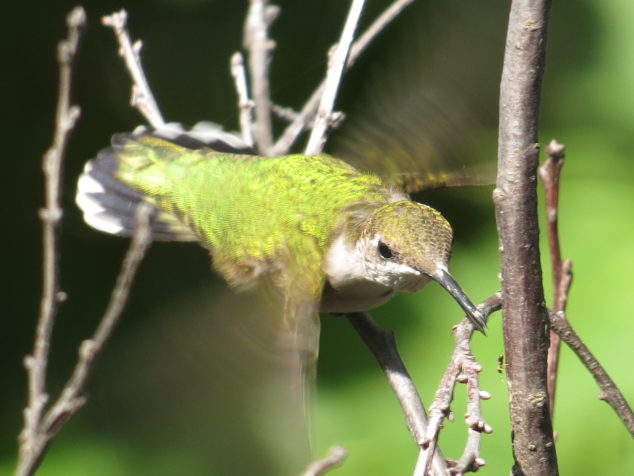I got an invitation from a Hummingbird one morning while working at the kitchen table. These notoriously fast flyers are usually seen zipping from one flower to another, but that morning the female Ruby-throated Hummingbird hovered at the window not five feet from me. I glanced to where the camera was, knowing that if I got up to get it, she would fly away. When she did fly away–after hovering for what seemed like quite a long time–I went back to my work. But it was only for a second, before I accepted her invitation. ‘I bet she went to the Lantana by the front door,’ I thought. I grabbed the camera and saw her sipping nectar from the yellow and pink flowers.
These tiny birds, about 3 inches long with a wingspan of 3 to 4 inches, weigh only 0.1-0.2 ounce. They hover by flapping wings in a figure 8 pattern at 53 wingbeats/second! Like a dragonfly, they can move in six directions and even upside down!
Along with fast wingbeats, Hummingbirds also have rapid heartbeats, fast breathing rates, and high body temperatures. They eat often and in great quantities in order to maintain that metabolism. They prefer nectar from red and orange flowers and eat small insects, pollen, and spider eggs.
Hummingbirds are very territorial; therefore, they live rather solitary lives. The females and males are only together for courtship and mating. Nests are usually built in deciduous trees 10-40 feet above the ground on the top of a descending branch. The nest is the size of a large thimble and is made from dandelion or thistle down held together with spider silk and sometimes pine resin. The exterior is camouflaged with moss and lichens.
The next day I noticed the Hummingbird was sitting on the Purple Plum tree outside the living room window. She was all fluffed up, and I wondered if Hummingbirds, like Dragonflies, have to periodically sit still to warm up their muscles or cool off.
Soon she was gone again in a flurry of wingbeats.
I had seen the iridescent Hummingbird often on various flowers in our garden. She was so fast and fleeting and getting a picture of her seemed impossible. I was grateful for her hovering invitation and her rest time on the tree branch. I was also grateful for the serendipitous timing that allowed me to see her both days!
In our fast and flurrious world, how often do we miss an invitation that comes our way? How many times do we go through our day in solitude, even while surrounded by people? How often are we in constant motion yet not getting much accomplished? Do we long for connection, yet brush people aside and hurry away? My invitation to you is to stop and consider the words ‘How are you?’ Most people utter and answer the question as a greeting. ‘Hi, how are you, fine’ in a passing, fleeting moment of time. When I ask the question, I really want to know. How are you feeling? How is it with your soul? How is life going for you on this particular day? I know that life is busy, but I urge all of us to rest for a minute or two and accept the invitation to connect and be grateful for serendipitous time together.
